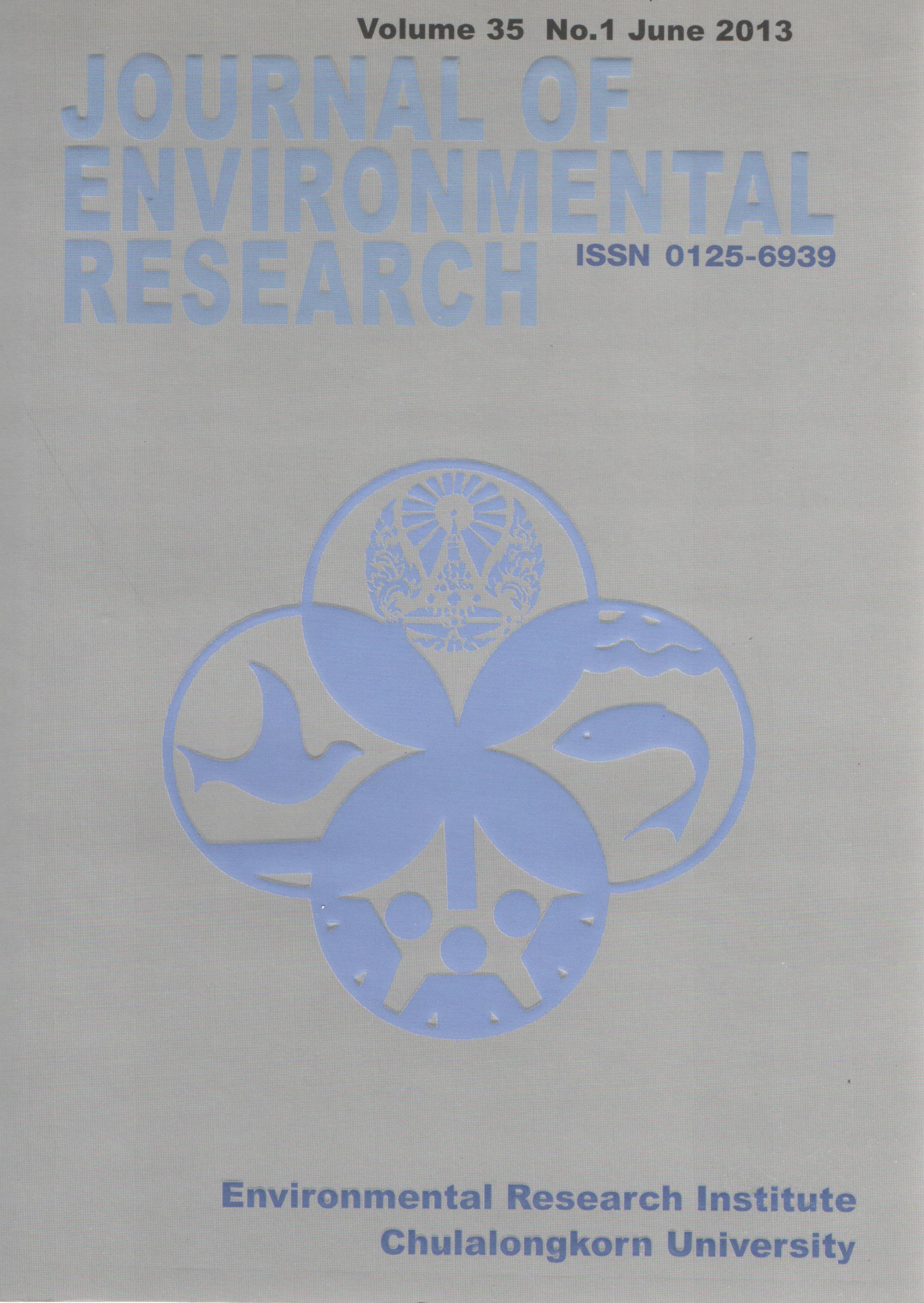Heavy Metal Accumulation in the Skeleton of Porites lutea from Ngam Island, Trat Province, Thailand
Main Article Content
Abstract
For investigating variation of heavy metal concentration in growth bands of coral skeletons, Poriteslutea samples were collected from Ngam Island, Trat province, Thailand. The skeleton samples were cleaned using oxidative and reductive treatments to effectively eliminate detritus and organic materials and were acid-digested. Five heavy metals, cadmium (Cd), chromium (Cr), copper (Cu), lead (Pb), and zinc (Zn), in the growth bands of Porites lutea were analyzed using Flame Atomic Absorption Spectrometry (FAAS) and Graphite Furnace Atomic Absorption Spectrometry (GFAAS). As a result, the range of heavy metals found in coral skeletons (μg g-1 as dry weight) was: Cd (0.01-0.19), Cr (0.28-2.25), Cu (2.40-7.71), Pb (0.18-1.13), and Zn (7.64-15.05). The levels shown in descending order were as follows: Zn > Cu > Cr >Pb> Cd. All metals in this study were found in lower concentration when compared with other studies in a polluted area. This study indicated that Porites lutea a good environmental indicator of marine pollution in Ngam Island, and can be useful for past proxy data.
Article Details

This work is licensed under a Creative Commons Attribution-NonCommercial 4.0 International License.
Published articles are under the copyright of the Applied Environmental Research effective when the article is accepted for publication thus granting Applied Environmental Research all rights for the work so that both parties may be protected from the consequences of unauthorized use. Partially or totally publication of an article elsewhere is possible only after the consent from the editors.

